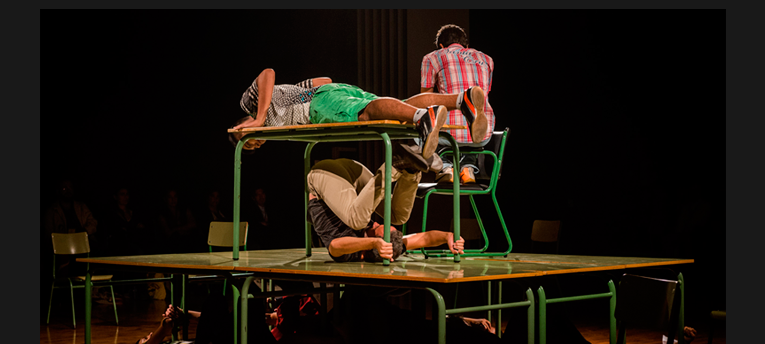The Project / CYCLE

Over the years since the initiative was first launched, IN RESIDENCE has gradually established a manner of going about things and developing the programme processes. We can distinguish three broad stages in the development of each edition:
PRELIMINARY STAGE. From public call for proposals to the first day of residence
In spring each year, processes are launched to select the participating schools. Firstly, the selection of schools is made through a public call for proposals, which is decided in early June. At the same time, the mediation teams put forward their proposals for the artists to be invited to take part. In early summer, the residency at each school is decided, and initial contact is made between the participating artists and the teachers responsible for each residency.
By early September, the artists have produced an initial description of the project that will be developed over the course of the residency. This is also when the organisational framework and times for each residency are decided.
The residencies themselves get under way in late September, which is also when the blogs that will describe the creative process throughout the residency are launched.
DEVELOPMENT STAGE. From the first day of the residency to public presentation
The weekly sessions with the artists, which take place until the end of the residency, are held from September to May. Another session, without the artist's presence, also takes place every week.
- “Landing”
All the participants (pupils, teachers, artists, mediators) involved in each residency “land” during the autumn. The first sessions are devoted to enabling the participants to get to know each other and define the project to be developed.
This is the stage that is most closely focused on research related to conceptualising the processes that will take place. From now on, each different residency begins to make its own specific connections, according to the type of project involved.
- Processes
In January and February, coinciding with a more concrete stage in the creative process, each participating school organises a session to discuss the current state and future horizons of the residency with the teaching team at the centre. These sessions have a dual objective: to communicate the process of the residency to teaching staff at the school; and to establish a range of collaborations with a view to expanding the impact of the residency on the centre.
- Formalisation, presentation and evaluation
The public presentations of the residencies take place in May. Each is presented at the most appropriate venue according to the process developed. Sometimes the presentations are made at the school itself, while in other cases the residency is presented at different cultural centres. Often, due to the connections established over the course of each residency, the processes and/or resulting works are presented publicly in other spaces.
Although various evaluation processes have still to take place for each residency, the presentation implies the end of the residency. Pupils, teachers, artists and mediators take part in these evaluation sessions, which are held after the public presentation.
FOLLOW-UP STAGE. From public presentation to collective exhibition
Since the first edition, the final processes have been presented in two-yearly collective shows at various exhibition centres in the city. The centres that have hosted these shows so far are the Suñol Foundation (2010), Fabra i Coats - Art Factory of Barcelona (2012) and La Capella (2014).
